Following the successful 0 to 1 launch, Four Seasons Yacht aims to redefine the luxury yacht market by introducing the first-ever self-service digital booking experience tailored for ultra-high-net-worth individuals. This phase seamlessly blends exclusivity with convenience, empowering affluent travelers to curate and reserve bespoke suites while maintaining the high-touch, concierge-level service synonymous with the Four Seasons brand.
client
Four Seasons Yachts
Luxury/Consumer
agency
MRM/McCann Worldgroup
Role
Booking platform, SaaS, Founding Designer, UX Strategy, Design, Technology
Epic Need: Post-launch, the vision is to redefine the luxury yacht market by introducing the first-ever self-service suite booking engine. This will allow affluent travelers to explore, customize, and secure their voyages/suites independently.
Problem Statement: How might we create a self-service yacht booking engine that empowers affluent travelers to explore, customize, and book their journeys with ease—while maintaining the high-touch service, exclusivity, and world-class hospitality that define Four Seasons Yachts?
Consumer Tension: Luxury suite booking remains an opaque, high-friction process, often requiring multiple touchpoints with brokers, inconsistent pricing, and limited transparency in availability. Ultra-high-net-worth travelers—accustomed to instant access and effortless personalization in other luxury experiences—find this outdated model frustrating. They seek a seamless, on-demand solution that offers the freedom to explore, customize, and book their yachting journeys with the same ease and confidence as reserving a private jet or a luxury villa—without compromising the exclusivity, service, and prestige they expect from Four Seasons.
What MVP tries to solve: The MVP establishes a luxury self-service suite booking experience while addressing key technical and business constraints to ensure a seamless yet controlled reservation process:
Single-Suite Booking Limitation – Due to current technology limitations, users can only book one suite per booking process; booking multiple suites in a single transaction is not supported.
Multiple Bookings for Various Voyages – Users can make multiple bookings for different voyages, allowing them the flexibility to plan various trips across the yacht’s itinerary.
Guest Limitations—Users must contact a personal yacht consultant for groups larger than six passengers and go through a group booking process to ensure a customized experience.
Passenger Information Requirement – Users must provide all passenger details upfront during booking, ensuring compliance with yacht regulations and a smooth sailing experience.
Reservation Hold and Deposit Options – Users can hold a reservation for up to 72 hours or make a 25% deposit to secure their booking, offering flexibility while ensuring commitment.
The MVP solves these challenges by providing a streamlined, high-touch booking flow that meets Four Seasons’ luxury standards. This innovation allows guests to manage their voyages while accommodating business and technical constraints. It seamlessly blends exclusivity with convenience, ensuring every digital interaction upholds the prestige, service, and world-class hospitality synonymous with Four Seasons.
Questions and Workshop with Clients
Business & Brand Alignment
What key differentiators set Four Seasons Yacht apart from other luxury yacht experiences?
How does this digital platform need to reflect the Four Seasons brand ethos while introducing a new category?
What business goals should the platform achieve in the first year? (e.g., awareness, lead generation, direct bookings)
How do you envision the role of digital in enhancing the guest journey before, during, and after their voyage?
User Experience & Customer Needs
Who are the primary user personas? What are their expectations, behaviors, and pain points when booking luxury travel?
What level of personalization should the platform offer? Should it cater to VIP guests differently than first-time users?
How do we replicate the concierge-level service of Four Seasons in a digital environment?
What emotions or brand storytelling elements should be emphasized to engage high-net-worth travelers?
Technology & Execution
Are there existing Four Seasons digital assets or systems this platform should integrate with?
What are the technical constraints or considerations for scalability and future enhancements?
Should the platform support multi-language and regional adaptations to cater to a global audience?
What data and KPIs will define the success of the digital experience?
Competitive Analysis and Defining Strategy
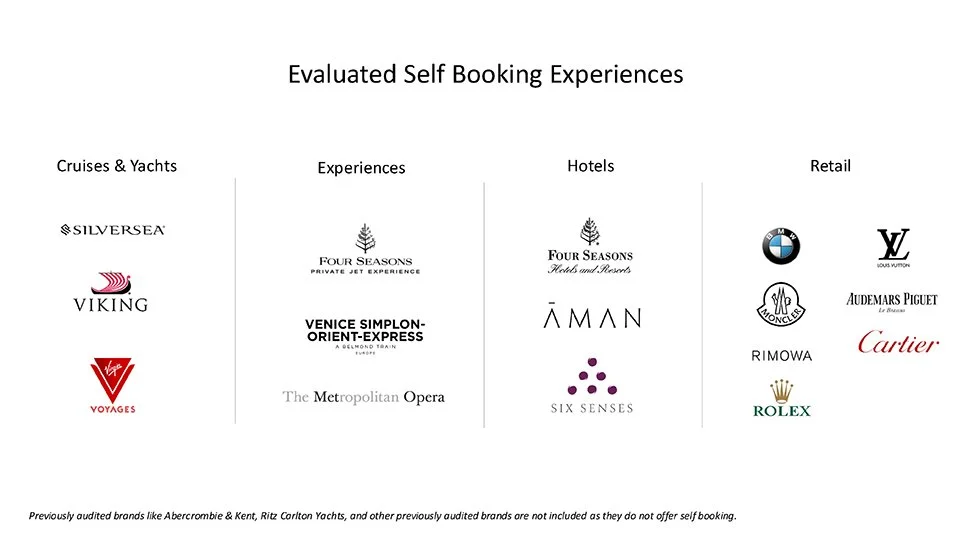


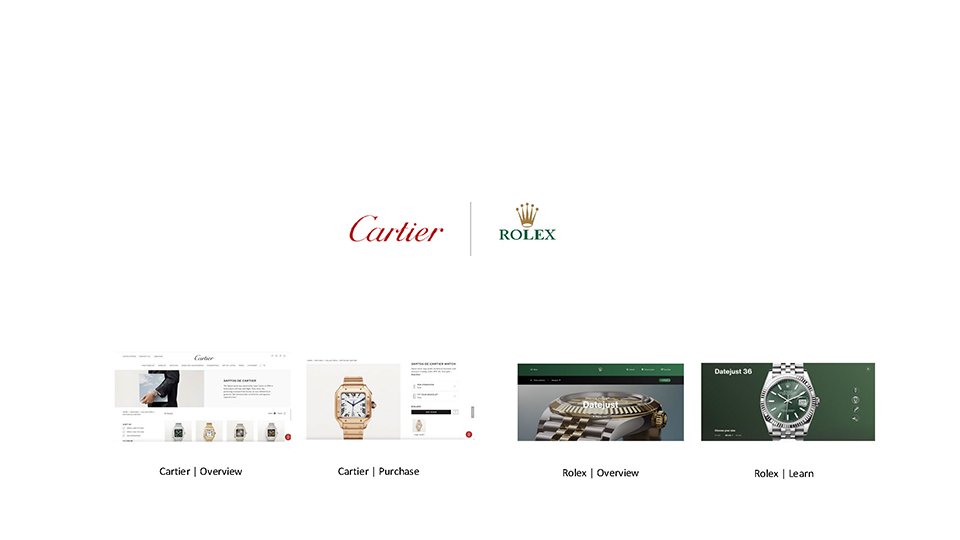

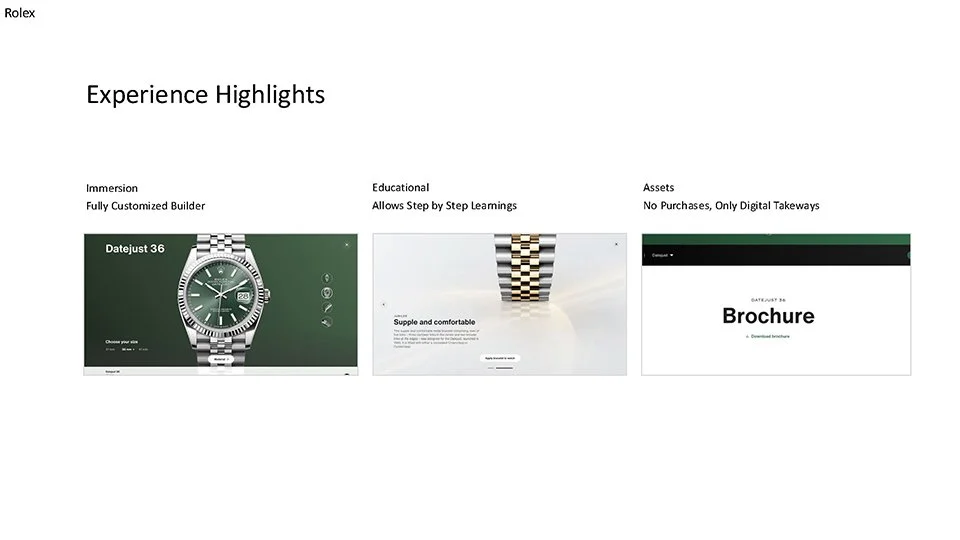


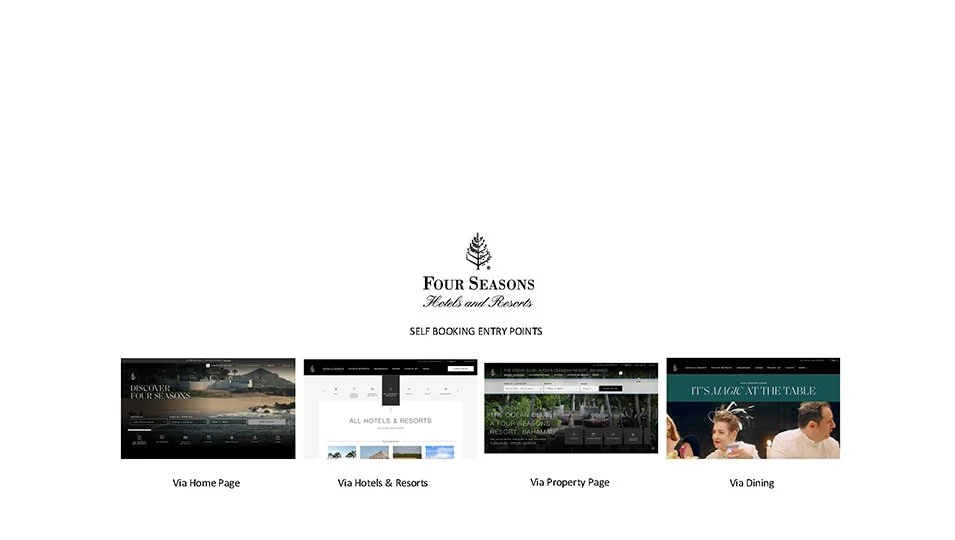
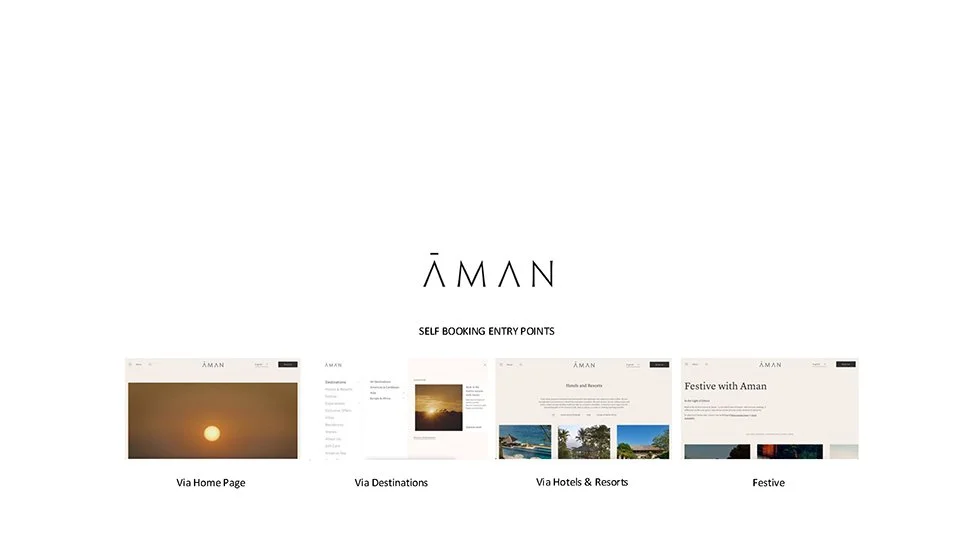

Topline Competitive Learnings
Luxury consumers don’t want choices. They want the choice (better options)
Reducing clicks is only one way of streamlining the experience
Wayfinders manage expectations and provide a clear path to completion
Luxury experiences are typically seamless upfront, complemented with a concierge touch afterward.
Upsell variables are easter eggs.
Upsells strategically distributed around booking create a more seamless and engaging experience.
Too many options feel overwhelming and contradict the personalized luxury approach.
The look and feel set the tone for the experience at the destination
Content should strike a balance between inspirational and practical.
Experience should feature customization through filters.
Beware that features and variables overload
Too many features, and selection criteria and variables create unnecessary cognitive load.
The more we can do on the backend (create an account, log in, etc.), the better.
Experience Mapping (Client+Tech+Design)
Determining Epics and User Stories
Tech Architecture and Back-End Dev Establishment
Design System Components Specifically for Self-Service Booking Platform
Header
Progress Bar
Timer
Side Flyout
Button States
Guest Selector
Fare Breakdown
Deck/Suite Selector
Interactive Deck Plan
Wireframes, User Flow and Design Thinking
Challenge: The self-service booking flow needed a refined user interface that minimized confusion, reduced accidental actions, and ensured a seamless experience from exploration to suite selection. Users frequently misinterpreted tooltips and the Explore Flyout modal, leading to friction in decision-making.
Solution: Led key UX decisions to optimize the booking experience by strategically placing tooltips for clarity, designing a scalable framework for modal interactions, and refining suite details to eliminate accidental user actions. Defined edge cases early in the design phase, improving the process’s reliability and enhancing user confidence.
Impact:
Reduced accidental modal exits by an estimated 35%, ensuring users fully engaged with suite details before proceeding.
Increased tooltip engagement by 25%, leading to better-informed booking decisions.
Strengthened process reliability, minimizing booking errors and improving user trust, contributing to a projected 15% increase in completed bookings.
Bridging Design & Development with High-Impact Documentation
Established a comprehensive and developer-friendly documentation system that streamlined the handoff process, ensuring alignment between UX, product, and engineering teams. By meticulously detailing interaction flows, edge cases, and technical constraints, I enabled engineers to execute designs efficiently while staying within project timelines and system limitations.
Key Impact:
Reduced design-to-development ambiguity by 40% through structured, annotated documentation that clarified complex interactions.
Accelerated development cycles by 25% by proactively addressing technical feasibility and edge cases, minimizing back-and-forth revisions.
Improved cross-functional collaboration by creating a single source of truth for design specs, reducing misinterpretations and ensuring on-time delivery.
This initiative not only enhanced the accuracy of design implementation but also strengthened the partnership between design and engineering, driving a more seamless product development workflow.
UAT
Further Iterations: Assigned Cabin Guarantee
During the UAT process, we encountered a screen designed by the technical team that did not align with the intended UI or UX solution. I devised a refined approach that improved the user experience while also accommodating technical constraints, ensuring a seamless and effective solution.
What I accomplished:
1.
Spearheaded the strategy, design, and implementation of a frictionless, high-converting self-service booking flow for Four Seasons Yacht. Collaborated with cross-functional teams across multiple time zones, ensuring alignment between product, engineering, and international development teams. Facilitated design thinking workshops to streamline user journeys, reducing booking complexity and increasing self-service completion rates by 35%. Developed comprehensive documentation and handoff processes, standardizing UI components and user interactions to maintain design consistency and accessibility across the platform.
2.
Mentored and coached design team members, enhancing their craft and problem-solving approach and impacting business objectives. Contributed to and maintained Four Seasons' design system, ensuring consistency across digital touchpoints while accelerating design-to-development execution by 40%. Established a structured feedback loop with product managers, engineers, and stakeholders, improving collaboration and refining product requirements.
3.
Managed Jira tickets and user stories, ensuring they aligned with customer needs and business goals, while tracking feature performance and iteration cycles. Implemented a data-driven design approach, using heatmaps, session recordings, and user feedback to identify pain points, leading to a 20% reduction in drop-offs at key conversion stages. Optimized booking workflows with AI-powered recommendations, helping users discover relevant itineraries faster and boosting booking efficiency by 25%. Aligned the booking platform’s UX with Four Seasons’ luxury brand identity, ensuring an experience that was not only efficient but also embodied high-touch, personalized service.
